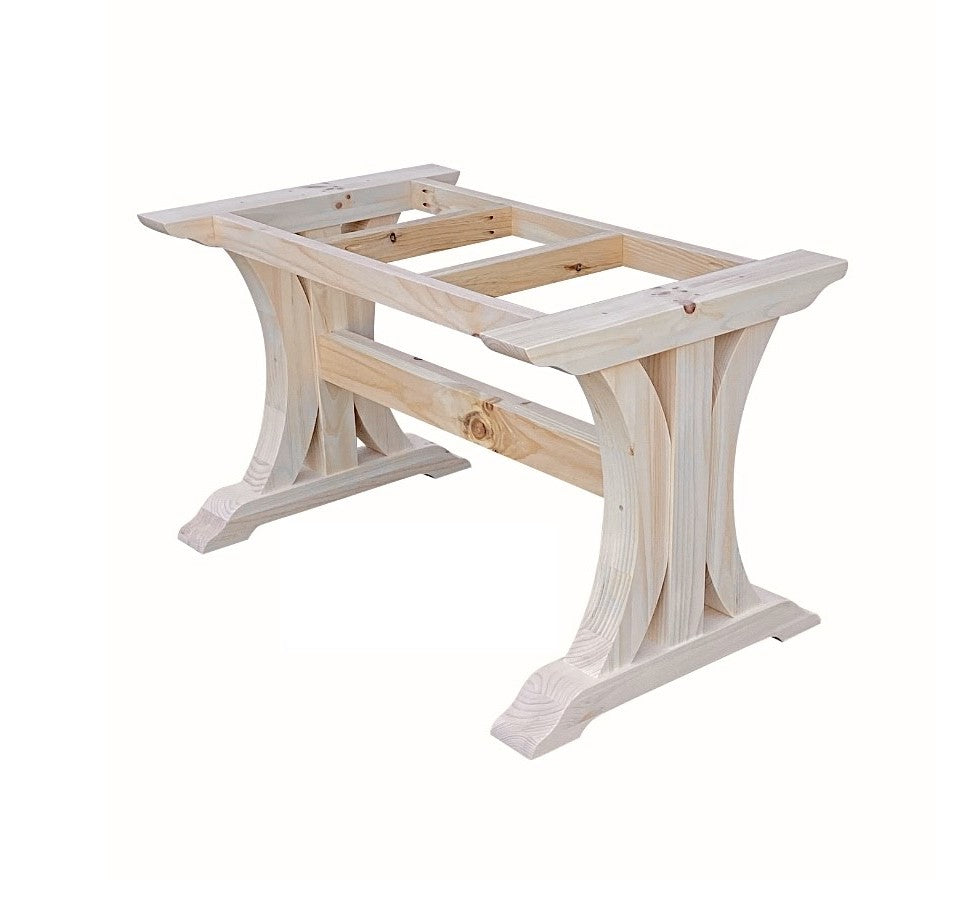Why Dining Room Table Legs Are Crucial for Your Table’s Stability
Wiki Article
From Traditional to Modern: Locate the Suitable Eating Space Table Legs for Your Design
While timeless designs such as cabriole and transformed legs evoke a feeling of ageless sophistication, modern styles like hairpin and geometric options present a chance for striking visual interest. As you think about these components, the concern stays: exactly how can you effortlessly integrate these varied leg styles to develop an unified eating experience?Understanding Table Leg Styles
The selection of dining room table leg designs can dramatically affect both the aesthetics and functionality of the area. Each leg style adds distinct sensible functions and aesthetic components, satisfying varied layout preferences and use demands. Recognizing these designs is important for selecting the ideal table that lines up with your total interior design vision.For instance, conical legs use a clean, classic look that can improve a space's style, while stand bases supply security and make best use of legroom, making them ideal for smaller rooms. Barrette legs, a hallmark of mid-century modern-day style, introduce an industrial flair, permitting for an airy, open feel. Similarly, trestle legs evoke rustic beauty, offering durable support and a feeling of timelessness.
Wooden legs can bring warmth and texture, whereas steel choices frequently share a streamlined, contemporary vibe. Eventually, comprehending table leg styles is vital for developing a natural eating location that reflects individual design while guaranteeing practicality and comfort.
Typical Table Leg Options
When choosing dining-room table legs, typical alternatives often symbolize classic sophistication and workmanship. These designs reflect an abundant heritage and a commitment to high quality, making them suitable for those who value traditional appearances.One of the most legendary conventional leg designs is the cabriole leg, characterized by its graceful rounded form. This design typically features decorative carvings and is most generally found in Queen Anne and Chippendale furnishings. Another popular alternative is the turned leg, which flaunts a series of smooth, rounded forms that provide a traditional look while preserving security.
Furthermore, the straight leg, while simple, uses a durable and basic framework that can blend effortlessly with a range of tabletop designs. For those drawn to ornate outlining, claw-and-ball feet legs stimulate a sense of grandeur and can work as a magnificent centerpiece in any type of dining room.
Finally, stand bases, although not purely legs, give an alternate traditional alternative that permits ample legroom and can be magnificently carved. Each of these traditional leg designs adds to the general atmosphere of a dining-room, marrying function with aesthetic allure.

Modern Table Leg Styles
Modern table leg layouts offer a diverse series of designs that stress innovative materials and clean lines. These styles commonly prioritize capability while working as striking centerpieces within a dining area. Minimalist aesthetics prevail, with legs crafted from materials such as steel, glass, and engineered timber, which contribute to a ventilated and modern feel.One prominent design is the barrette leg, defined by its slim, tapered framework that supplies stability without overwhelming the table top (dining room table legs). This style is typically found in mid-century modern-day furnishings and can easily match different table shapes. An additional pattern is the usage of geometric forms, where legs may take on unbalanced or angular forms, adding visual interest and a touch of artistry

Blending Designs for Unique Areas
Frequently, property owners look for to create one-of-a-kind eating areas that reflect their individual style by blending various style elements. This approach enables the incorporation of varied aesthetic appeals, leading to a harmonious yet unique environment. For example, coupling a rustic wood table with sleek, modern-day steel legs can develop an attractive comparison that boosts the room's total appeal.Furthermore, incorporating vintage table legs with contemporary table tops can evoke a feeling of background while keeping a modern-day sensibility. Such combinations not just display specific taste but also motivate creativity, permitting property owners to curate an area that feels both individual and welcoming.
Color plays an important duty in this blending process; choosing table legs that complement or comparison with the existing color pattern can improve visual rate of interest. Whitewashed legs useful site can soften the boldness of a dark table surface area, producing a balanced aesthetic.
Tips for Selecting the Right Legs
Choosing the right table legs is vital for attaining both performance and visual appeal in your eating space. Begin by thinking about the general style of your space. Traditional setups gain from legs that include detailed makings or transformed layouts, while modern spaces might require streamlined, minimalist styles.Following, assess the height and security of the legs. dining room table legs. Basic table vary between 28 to 30 inches in height, so ensure the legs complement this dimension for comfort. In addition, durable products, such as hardwood or steel, can improve security and longevity
Review the leg shape as well-- options include directly, tapered, or stand layouts. Straight legs supply a traditional appearance, while tapered legs can add a touch of elegance. Pedestal bases provide sufficient legroom and are excellent for smaller areas.
Final Thought
this contact form In summary, choosing the suitable dining room table legs calls for cautious consideration of both typical his response and modern-day designs. By balancing leg design, elevation, and material with the general decoration, a natural and inviting environment can be attained.The selection of dining space table leg designs can dramatically affect both the appearances and performance of the space. Eventually, understanding table leg designs is crucial for developing a cohesive eating area that mirrors individual design while making sure practicality and comfort.One of the most iconic standard leg styles is the cabriole leg, characterized by its stylish bent form. Straight legs supply a traditional look, while tapered legs can include a touch of style.In recap, choosing the suitable dining space table legs requires careful consideration of both typical and contemporary styles.
Report this wiki page